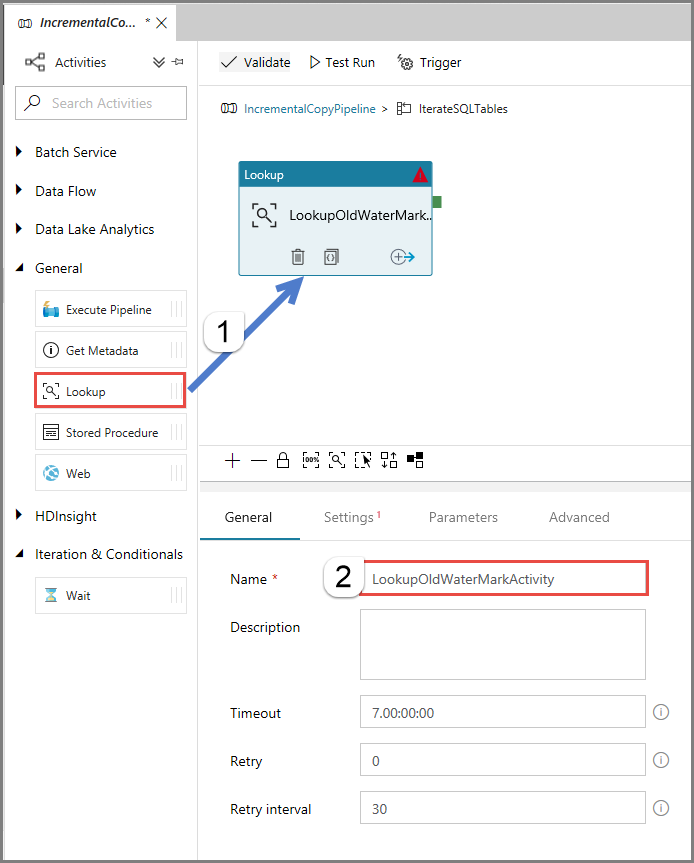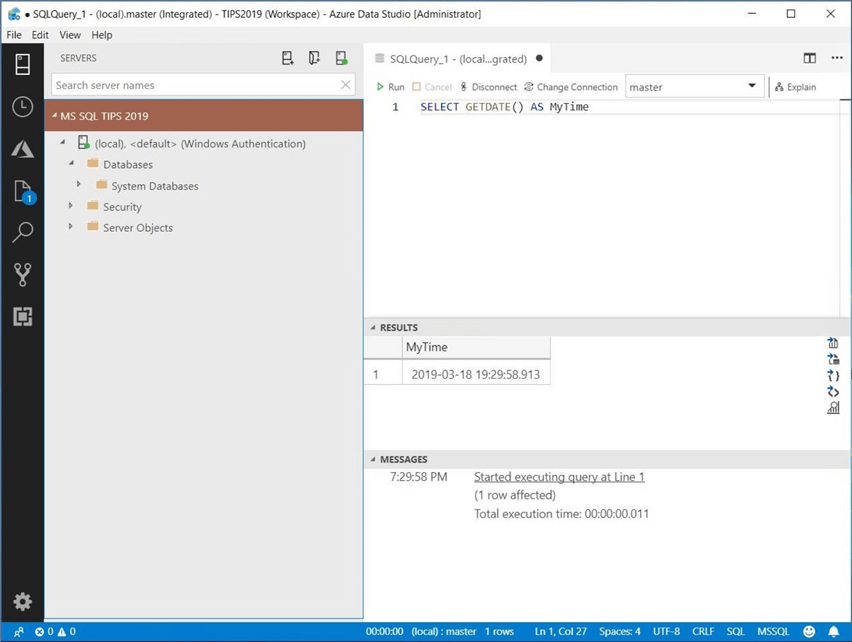

- #Azure data studio add column to table how to#
- #Azure data studio add column to table update#
- #Azure data studio add column to table code#
Instead, you have to use the sp_rename command for this. But you cannot do this with the ALTER TABLE command. Once you add columns in SQL, you can also rename them.

#Azure data studio add column to table how to#
How to Rename a Column From an Already Existing Table? Now, use it in your ‘Employee’ table to drop the ‘E_Address’ column. This will drop an already existing table from the table. The syntax for dropping a column is as follows: Like how you add columns in SQL, you can also drop it using the ALTER TABLE command. Now, try to insert VARCHAR data to see the results.Īs you can see, the query failed as the server had to convert the VARCHAR data to INT to add in the row, but it failed. If the column was modified, it will accept the data and insert it into the row.Īs you can see, it updated the data as it modified the column to be of INT data type.
#Azure data studio add column to table update#
But add an integer number to the first row using the UPDATE statement and see if it accepts the data.

You might not be able to witness any difference in the above output. Hence, you will modify the data_type for that column. But a salary can be either INT or decimal. If you have noticed, this example has used VARCHAR data_type for this column. In the syntax mentioned above, you can mention the modifications in the place of col_desription.įor this example, you will modify the E_Salary column. The ALTER TABLE command also lets you modify an existing column. How to Modify a Column in an Existing Table? Now that you know the syntax to add columns in SQL, use it to add two columns, ‘E_Address’ and ‘E_Salary,’ to your already existing ‘Employee’ table. With the same ALTER TABLE command, you can quickly add multiple columns to an existing table through a single ALTER TABLE command. NOTE: You will have to use a Microsoft SQL server throughout. You have set the ‘E_ID’ column as a primary key and the ‘E_Email_Id’ column as unique.
#Azure data studio add column to table code#
INSERT INTO Employee VALUES (4, 'Rachel', 'F', 'ra.com') Īs you can see, the code mentioned above creates the ‘Employee’ table with four columns and four rows. INSERT INTO Employee VALUES (3, 'Florina', 'F', 'fl.com') INSERT INTO Employee VALUES (2, 'David', 'M', 'da.com') INSERT INTO Employee VALUES (1, 'George', 'M', 'ge.com') For this example, you must create a table named ‘Employee’ with E_ID, E_Name, E_Gender, and E_Email_Id columns. In the end, you will use the SELECT statement to view the table. Hence, before starting with anything else, create a table using the CREATE TABLE command and populate it using the INSERT INTO statement. Here, you will explore the ways to add column in sql to an existing table here. This command lets you add, modify, and delete several things including, constraints, views, and columns in SQL. For this, you can use the ALTER TABLE command. Hence, programmers are not likely to take that option leaving the better choice to add another column at disposal. The first option is not a good choice as it will consume a lot of time, especially if the table has vast data. There are two options available you can take backup, drop the table, and create a new one or add another column to the table. But now, HR comes and says that they want you to add column in SQL to the already created Employee table. You already successfully created the table. The HR and senior managers ask you to include columns such as employee_id, first_name, last_name, gender, email_id, and address. If the new column is added at the end of the table i.Picture this, you have created a large table in a database to manage employee data. My question is why the back-end publish script which is automatically getting generated at the time of publish contains wrong query At the insert step the structure is as follows: Insert into table select * from backup table order by id. Upon checking the publish script which was generated found out that it is taking backup of the original table then drops the entire tableĪfter that creates the table with new structure as provided above and tries to again insert the data in the new table. Order by clause is not allowed in Insert Select statement unless TOP or FOR XML is also specified.

Then my visual studio project for data warehouse was successfully build and then i clicked on Publish option and my publish failed with the error msg: Skill column being the new column which i added in the table and the table already has some data in the existing columns. I am adding two columns in middle of the table and not at the end of the table in Visual studio solution.


 0 kommentar(er)
0 kommentar(er)
